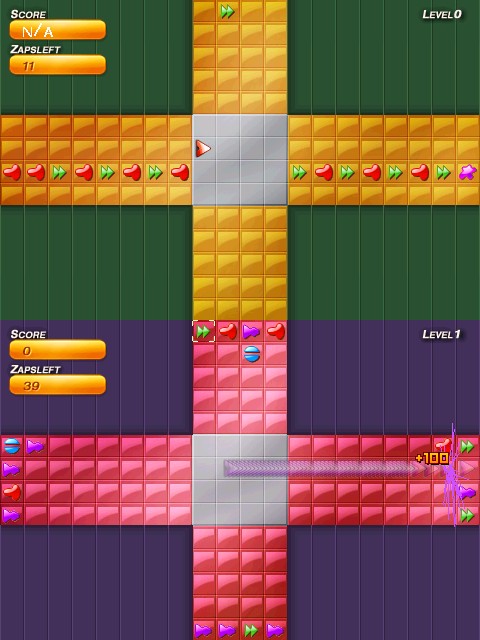 |

Submitted by , posted on 12 December 2004
|
 |

Image Description, by

Here is our little game, the first commercial one.
ScreenShot1 shows the game in action mode. This game
was created to run on the tapwave zodiac
(www.tapwave.com) from the ground up using tricks i
learned in various programming books. The code uses
standard bitblts to draw the backgrounds and menus, it
uses color sourced blits to draw the sprites of
course, and in this screen shot we can see it doing a
graphics blit using a alpha mask(the shooting image)
and then it also uses the particular graphics api to
draw the cool explosion (pixels that have trails and
fade).
Background: You move your little piece around a
specific area to destroy pieces of like color that
entrench on your area...if they make it into your safe
square (the greyarea) its game over man. To destroy
other colors, you swap colors by shooting unlike
colors.
Technically the game isnt impressive, but the device
it was made on was. It was easy to port directdraw
code over to the device (cause they both use the same
concepts: blitters, and surfaces) and the device
itself is a cool pda for gaming: 480x320, 16bit color,
analog stick built in , touch screen and rumbler. The
api tapwave provides is pretty slick, and this game's
core was up and running in a weekend (took us 6 months
to polish the game).
So technical break down:
480x320 16 bit graphics
uses most the blitting options the device's api
offers.
Uses the rumbler effects
Though it being a 2d game, it doesnt really utilize
the analog stick.
Oh it should be noted, all the graphics are loaded
into the video ram, cause the device comes with a 8mb
2d accelerated video card!!! :) (making those
transparent blits nice :) ) its a smooth device, and
runs PalmOS. Though, we built the game from the
ground up for the specific device so it wont run on
other palm devices, but it means it doesnt "feel" like
a palmOS game, which is good... (though I didnt have
to learn all the intricacies of the palmOS)
The last screen shot is just a shot from the puzzle
mode, where u try to clear the board with only so many
shots. In retro spect we should of developed a PC
side client to let u make new puzzles and copy them to
the device, or better yet write a module in the game
lets u make ur own puzzles, and share them wirelessly
(the device has bluetooth) via infared, or load off an
SD card that may be present in one of its two slots.
I can say creating for this device was fun, especially
since using the API was so close to the directX api,
that made the learning curve to get a game up and
running a lot smaller than I previously anticipated.
Thanks,
Shane
www.viciousbytes.com
|
|

